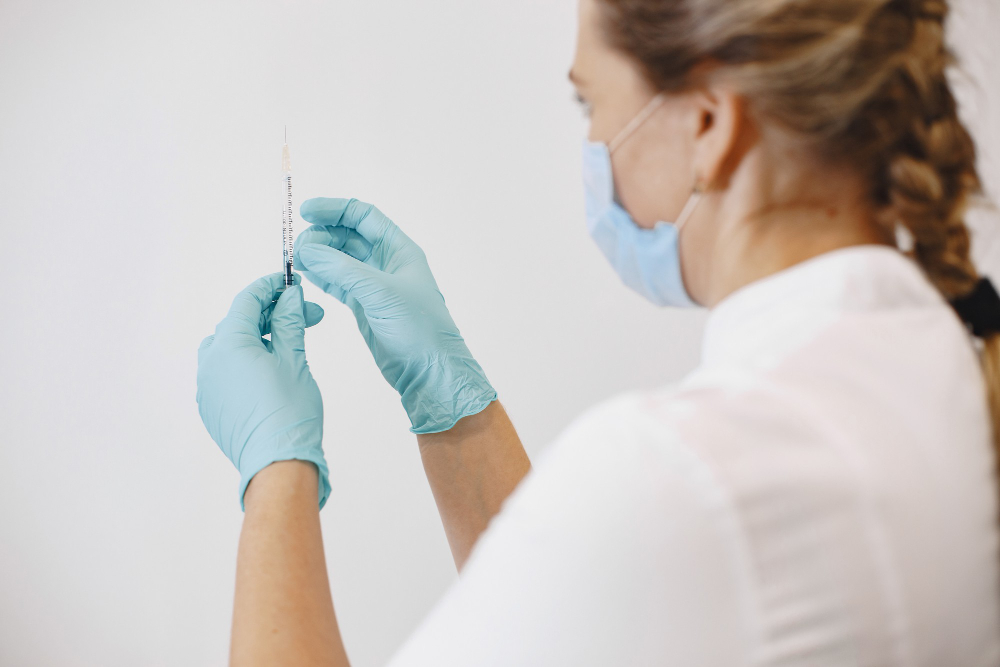Have you ever gone to the OB-GYN, just wanting to ask what tests you can do to stay on top of your health as a woman when suddenly she tells you to have a Pap smear done…
*insert horror movie background music*
A what? A Pap smear.
Suddenly, you remember some officemates talking about it before and how painful it was. Then you tell your doctor, you’ll think about it and come back when you’ve decided.
This is a common scenario during OB-GYN visits and an unfortunate one at that. You see, we are always scared of the Big C (cancer). But more often than not, people do not take proactive measures to prevent cancer, either because of fear of the unknown, misinformation, or lack of information.
Here’s a breakdown of what you need to know:
The Numbers
Cervical cancer remains to be the second most frequent cancer among women in the Philippines. Current estimates indicate that every year, 7,897 women are diagnosed with cervical cancer, and 4,052 die from the disease1. Philippine data suggests that the cervical cancer incidence is about 14.5 per 100,000 women2. Considering that this is a preventable disease, these numbers remain moderately high.
The Cause

Cervical cancer is caused by persistent infection of high-risk types of Human Papilloma Virus (HPV). HPV is a common sexually-transmitted infection and about 80% of women will be infected with HPV at some point in their lives. HPV can also cause cancers in other areas in the body including the throat, anus, vagina, vulva, and even the penis for men.
The Risk
There are several factors that are associated with the risk of developing cervical cancer. These include HPV infection, a low immune system, smoking, contraceptive use, having several children, an increased number of sexual partners, and poor sexual health practices.
The Prevention

As the old adage goes, “An ounce of prevention is worth more than a pound of cure.” In the case of cervical cancer, there are primary and secondary types of prevention.
Primary prevention, as with a lot of other diseases, is vaccination. Three types of vaccines are available: The bivalent vaccine covers two types of high-risk HPV strains. The quadrivalent vaccine targets high-risk HPV types 16 and 18, including the virus strain that causes genital warts (types 6 and 11). The nonavalent vaccine targets the same four HPV types plus another five high-risk strains.
The vaccine is most effective when given prior to sexual activity, and can be given as early as nine years old for both boys and girls. Adults will normally get three doses at 0 months, 1 or 2 months after, and at 6 months. Adolescents will need only two doses at 0 months and at 6-12 months after. You won’t be needing a booster shot or another type of HPV vaccine if you have completed the primary series accordingly.
Secondary prevention aims to check whether your cervix (the lower part of the uterus) does have abnormal cells or infection. A lot of women do not know that we can actually intervene during the premalignant stages before it becomes full-blown cancer. A Pap smear is one of the quickest and easiest ways to do this. It remains the most widely used screening test. Co-testing with HPV DNA is recommended at particular time intervals where this resource is available. HPV DNA co-testing is done at the same time as your Paps test. A visual inspection with acetic acid (VIA) is also a suitable alternative for screening for low-resource areas where a Pap test cannot be done.
Typically, the test is done during the time of the month when you don’t have your menstruation. You will be asked to urinate prior to the procedure and then lay down flat on the bed with knees bent (lithotomy position). The doctor will then insert a lubricated instrument called a speculum to visualize the vaginal walls and the cervix. This is the part where most people complain of discomfort. It will help when you do deep breathing exercises during this step as it relaxes your pelvic muscles, making the process smoother and faster for you and your doctor.
A cervical broom, a cytobrush, or a small wooden spatula will then be inserted into your cervix to sample both the outer (ecto) and inner (endo) cervix. These are placed on a slide, fixated, and sent to the lab for microscopic examination. You will normally get your results in a few days, just in time for your follow-up visit.
Contrary to popular belief that we should wait until we’re older (it doesn’t help that some companies offer these tests as part of their annual exam only at the age of 30), cervical cancer screening should begin at age 21 and every three years thereafter if you are between 21 to 29 years old. From age 30 to 65 years old, co-testing with HPV DNA plus cytology/Pap smear is preferably done every five years. A Pap smear alone may be done every three years if the HPV DNA co-testing is not feasible.
If you are 65 years or older, the screening can be discontinued if you have had three normal consecutive test results. Lastly, if you had your uterus and cervix removed for reasons not relating to cervical pre-cancer or cancer, screening may be discontinued already.
To date, a lot of lives have been saved by preventing and screening cervical cancer. The financial, emotional, and physical burden of cancer should never be underestimated. The benefits and the peace of mind that comes with a normal test result greatly outweighs the slight discomfort experienced during the test.
Talk to your friendly neighborhood OB-GYN about HPV vaccination and cervical cancer screening today. The life that you save may be yours.
REFERENCES:
1 Human Papillomavirus and Related Cancers, Fact Sheet 2021, (ICO/IARC Information Centre on HPV and Cancer
2 World Health Organization – Cervical Cancer Country Profiles, 2021






